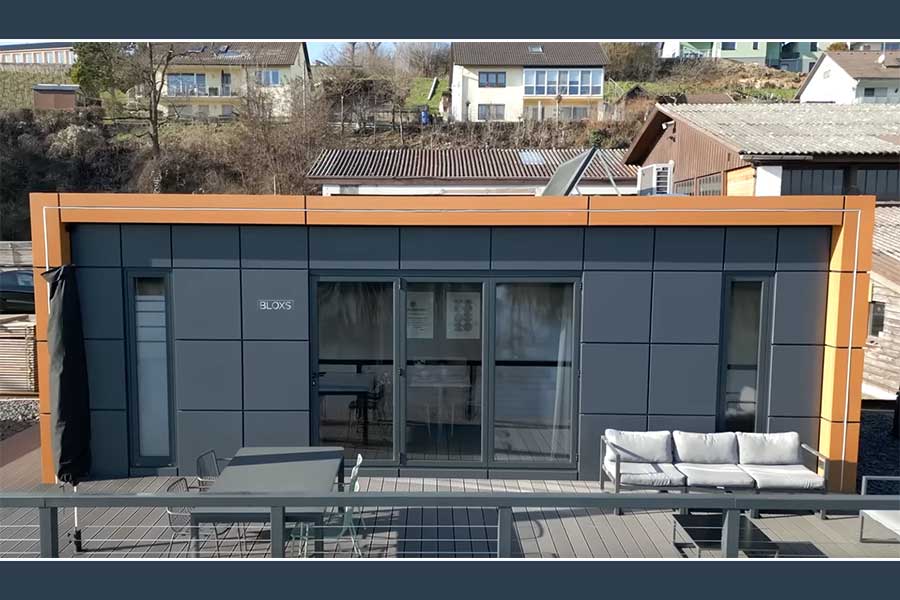Sign up to the Built Offsite Newsletter

Modular home builders could capitalise on Smart Home trends, says Samsung research.
Samsung’s BNB Integrated Offering’s Smart Home Buyer Index (SHBI) 2024 reveals a significant trend: consumers are willing to spend an average of $40,000 to transform their homes into smart homes. This data points to a burgeoning market, with 79% of surveyed individuals expressing a desire for smart home features. The SHBI suggests that the inclusion of smart technology could be a critical factor in encouraging the uptake of modular homes in Australia, particularly as these homes can be designed with such features during the manufacturing stage. (main pic: German modular builder Bloxs comes with Smart Home features.)
Modular homes, constructed under controlled conditions or from a kit-of-parts, present a unique opportunity for integrating smart home technologies seamlessly. Given that consumers are prepared to pay a premium for these features, modular home builders in Australia could position themselves ahead of the competition by offering smart technology as an integral part of their product.
The SHBI also found that consumers are willing to pay a 7.7% premium on the average UK house price of AUD $540,000, equating to approximately $40,000. This willingness to invest in smart home features indicates a market ready for innovative housing solutions that offer energy efficiency, cost savings, and enhanced security.
Financial concerns are a significant factor for those looking to incorporate smart home technology. Around 63% of respondents sought cost savings through technology, and approximately 70% cited energy efficiency as a primary reason for using smart technology. Additionally, 84% of those surveyed wanted to reduce their energy bills. Samsung’s analysis of search volumes supports this trend, showing a nearly 60% increase in searches for smart energy appliances from April 2023 to April 2024. Notably, air source heat pumps saw a 173% year-on-year increase in search volume, surpassing searches for smart meters.
Mark Seaman, head of Samsung B2B Integrated Offering Team, commented, “The data shows that understanding the importance consumers place on smart homes will increase the value of rental and sale prices to help drive return on investment for homebuilders and developers.” This focus on energy efficiency aligns with the industry’s preparation for the UK Government’s Future Homes and Buildings Standards, which will require new homes to produce 75% to 80% less carbon starting in 2025.
The SHBI further highlights that home security is a major driver for smart technology adoption, with 75% of respondents seeking peace of mind through connected security features such as doorbells and cameras. Integrating connectivity into homes enhances security and control, making smart technology a compelling feature for potential homebuyers.
The interest in smart homes spans across age demographics, with a notable rise in interest among those over 65. This demographic shift is crucial as the older population in the UK is expected to grow to around 26% by 2066. The construction industry, anticipating new work output to grow by 21% from 2024 to 2029, must consider these trends when planning new developments.
The SHBI survey revealed that 80% of respondents find new builds appealing, with 36% citing pre-fitted smart technology as a primary reason. Additionally, 53% believe new developments are designed for modern living due to their technological capabilities, while 57% are motivated by energy efficiency. Specifically, 40% of people over 65 indicated that pre-fitted technology would encourage them to move into new builds, highlighting the importance of integrating technology in all types of homes, including retirement properties.
Seaman concluded, “There is a real opportunity for developers and homebuilders to engage the right partners and integrate technology from the outset, taking a digital-first approach when building the homes of tomorrow, today.”
Download the (pdf) report HERE